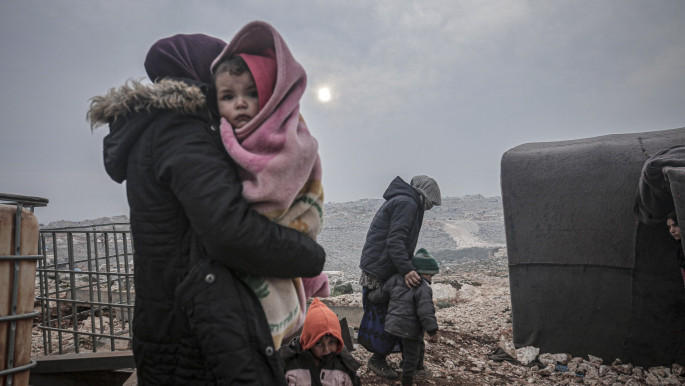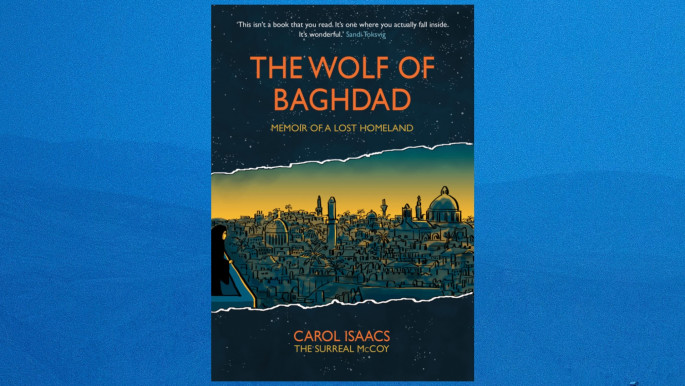 |
Syria's chemical weapons arsenal: A complete history from the Cold War to Obama's 'Red Line'
Joby Warrick, a Pulitzer prize winning journalist does this in a lively and easily accessible narrative in Red Line: The Unravelling of Syria and the Race to Destroy the Most Dangerous Arsenal in the World.
He shines a light on just how extraordinary the international operation to rid Syria of 1,300 tonnes of some of the most dangerous materials on the planet was, including Sarin and VX.
He describes this as "one of the most remarkable disarmament efforts of all time." The reality is that unlike Iraq in 2003, Syria did have weapons of mass destruction, it did have mobile vehicles for dispersing it and they were used.
The headline new feature is the story of how the CIA ran a mole inside Syria's chemical weapons programme for 14 years. This mole even passed on a sample of exactly what the Syrians were making.
Syrian regime scientists nicknamed their project al-Shakush or "The Hammer." The mole was eventually outed and executed by the regime.
 |
Syria did have weapons of mass destruction, it did have mobile vehicles for dispersing it and they were used |  |
 |
|
| Read also: Syria's bleak decade |
Sadly, the details on this part of the story are scarce and forms only an introduction to the main narrative of how Syrian chemical weapons were used and then disarmed. Who knows if more material will ever surface about this?
The title of Warrick's work harks back to the infamous reference attributed to President Obama when he stated that the use of chemical weapons would be "a red line for us, and that there would be enormous consequences if we start seeing movement on the chemical weapons front, or the use of chemical weapons."
The world was and still is divided as to the pros and cons of whether taking military action in 2013 were, as to whether a US-led military campaign would have altered Syria's fate for the better. The two Trump-initiated missile attacks in 2017 and 2018 certainly had little bearing on the conflict.
Many will be aware that the chemical weapons arsenal was dismantled and destroyed as a result of a rare US-Russian agreement but few will know just how close the whole operation came to disaster on so many occasions.
It was a race. Imagine the colossal risks and drama a race to get all of these materials out of the country within nine months in the middle of a war zone.
This stockpile of uber-toxic chemicals then had to be destroyed on a ship in the middle of the Mediterranean producing millions of gallons of waste material risking capsizing the boat. No country had been willing to take the materials.
The author argues that the failure of the US to respond to the 2013 chemical weapons attacks saw a surge of support for the Islamic State group (IS) and Al-Qaeda as many Syrians gave up on the idea of the US coming to their aid.
 |
The message received was the US and its Western allies did not care about the fate of the Syrian people |  |
The message received was the US and its Western allies did not care about the fate of the Syrian people. The analysis may have had some merit, even if the solution was deeply and alarmingly flawed.
Warrick paints an alarming account of how IS and Al-Qaeda experimented in chemical weapons after having failed to get their hands on the Syrian regime's stock.
 |
|
| Read more from TNA's Book Club: The Wolf of Baghdad: Memoir of a Lost Homeland |
He relates how a laboratory in Mosul was the nerve centre of IS's efforts, and how crude blistering agents were eventually used. One can be certain that their quest to master chemical weapons is far from over.
Ridding Syria of chemical weapons is a positive. The world is better off for this. Yet so many of those involved were all too aware that this was no cause for celebration as it had not changed the lives of Syrians themselves.
Far more Syrians have died from conventional weapons. Even now, although the Assad regime did disarm, it clearly retained in violation of its legal commitments some chemical agents.
For four years from 2013 to 2017, the regime did not appear to use this arsenal until it calculated that with a Putin-friendly, President Trump in the White House, it could resume their use. Despite the horror of chemical weapons and despite current efforts in French and German judicial systems, nobody has been held accountable for the use of these appalling agents of death.
This book will benefit both Syria observers and those interested in disarmament issues. Above all, it contains powerful material that should serve as a warning to us all – in terms of chemical weapons in Syria, if anything we were fortunate.
Chris Doyle is the director of CAABU (Council for Arab-British Understanding). He is a regular opinion writer and commentator on the Middle East and has organised and accompanied numerous British parliamentary delegations to the region.
Follow him on Twitter: @Doylech
The New Arab Book Club: Click on our Special Contents tab to read more book reviews and interviews with authors:





 Follow the Middle East's top stories in English at The New Arab on Google News
Follow the Middle East's top stories in English at The New Arab on Google News


